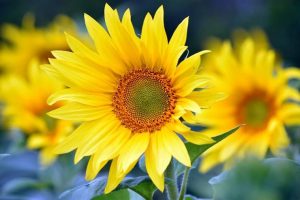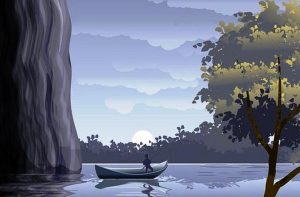The Cederberg region of South Africa is a still unspoiled mountainous area, characterized by unique landscapes with unusual rock formations in which ancient cave paintings can be found.
Just two hours from Cape Town, you can admire the Cederberg mountains, peaks of varying altitudes as high as 2000 meters. Made of sandstone, the rocks have been shaped over the millennia by wind and rain. The erosion process has given birth to particular conformations in the stone.
Among the best known is a rock, in the shape of a large Maltese Cross, about twenty meters high. Equally impressive is the Wolfberg Arch, whose colours at sunset and sunrise create unforgettable displays of light and shadow. The singular aspect of certain rock formations can only be seen from certain angles and perspectives. This is the case of Soldaatkop, a bizarre rock formation that resembles a person’s face, but which can only be recognized by travelling towards Clanwilliam, along the R364.
The mountains of this region were once the refuge of the ancient San, the Bushmen. This is shown by the over two thousand sites discovered in the Cederberg, where you can admire the cave paintings of the original inhabitants of South Africa. Some paintings are representations of their daily life, marked by hunting and dancing, others still remain enigmatic.
Numerous drawings were painted by San shamans after reaching a kind of trance. Many paintings, therefore, represent visions that go beyond the tangible and material dimension. Art joins ancient rituals and primaeval forms of spirituality. Unsurprisingly, these sites are protected as a national heritage.
The rock paintings in the caves of Stadsaal, where elephants are portrayed next to strange togate figures, are outstanding. These paintings bear witness to a past where nature was variegated, as well as being a nurturing mother. Unfortunately, in this area of South Africa, elephants are no longer seen.
One of the last sightings of pachyderms in the Cederberg dates back to the distant eighteenth century. However, among the waterfalls, caves, marshy areas and streams, numerous other mammals live undisturbed, including leopards and baboons, especially the chacma baboon, antelope and caracal.
In the mountainous areas of the Cederberg, there is also luxuriant vegetation, in which the protea cryophila stands out. It is a rare species that prefers a habitat with low temperatures. For those who love South African nature, there is the added attraction of the valley called Biedouw, about 80 kilometres from the town of Clanwilliam. After the rains, this valley is tinged with a lively mantle due to the flowering of colourful floral species.
Among these, we find the wild plant Aspalathus linearis, a bushy coniferous tree that only since 1930 began to be successfully cultivated for the production of the famous South African red tea. Not surprisingly, the Cedarberg region is the only area in the world where you can travel the “rooibos road”, to admire the plantations of Aspalathus linearis and to discover a peculiar naturalistic aspect of this corner of South Africa.
(Photo: South Africa. The Cederberg paintings. 123rf.com) – (Silvia C. Turrin/SMA)






